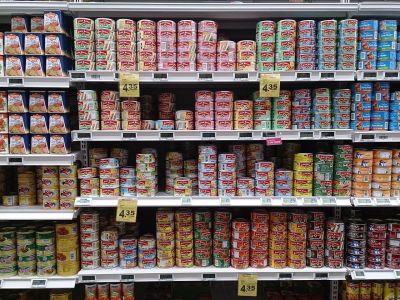Smart labels that improve food quality

Canned food
By ProjectManhattan (Own work) [CC BY-SA 3.0 (http://creativecommons.org/licenses/by-sa/3.0)], via Wikimedia Commons
Discarding still-fresh food upon passing its best-before date wastes both food and money. One solution that could soon be a reality is intelligent food labels that indicate exposure to risky conditions between factory and shelf.
Keeping perishable food cold to prevent spoilage is a challenge for food producers, transporters, retailers and consumers alike. Temperature monitoring from post-production through to household storage is therefore important to prevent critical increases in temperature at any point in the cold supply chain.
The EU-funded IQ-FRESHLABEL project developed innovative labels to monitor temperature and oxygen conditions in frozen and chilled packaged foods throughout the food post-production cycle.
While a previous project (FRESHLABEL) developed temperature indicators for fresh-chilled products, IQ-FRESHLABEL identified consumer, retailer and industry needs for monitoring frozen food. Researchers also recognised the importance of monitoring fresh-chilled food packaged in modified atmosphere packaging (MAP), where carbon dioxide and oxygen levels are manipulated to reduce bacterial growth.
They hence developed two intelligent labels that change colour to provide easily interpreted information on potential food spoilage at any point in the cold chain. The chemically induced colour changes are based on length of exposure to risky high temperatures and changes in oxygen levels in MAP-packed products.
Although prototypes received positive feedback from manufacturers and consumers, and they were validated in frozen fish and poultry trials, several challenges remain. These include integrating the temperature- and oxygen-monitoring indicators into the food packaging, making the colour change unambiguous, and including instructions on remaining shelf life to provide certainty.
The benefits of implementing smart labels, however, clearly outweigh the risks. Their value is not only in preventing food spoilage or increasing consumer confidence in food supply chains, but also in reducing edible waste.
published: 2015-04-14

